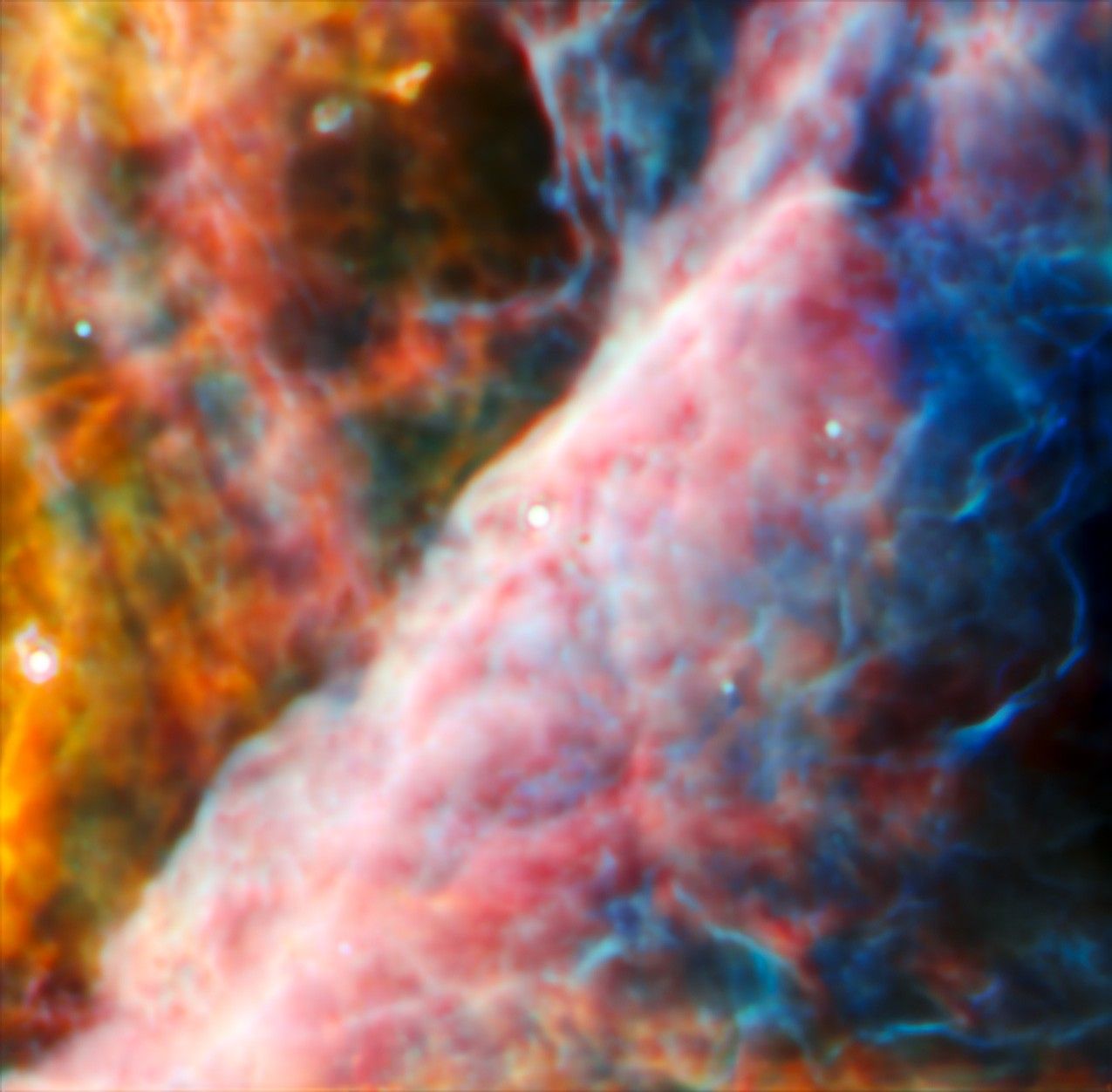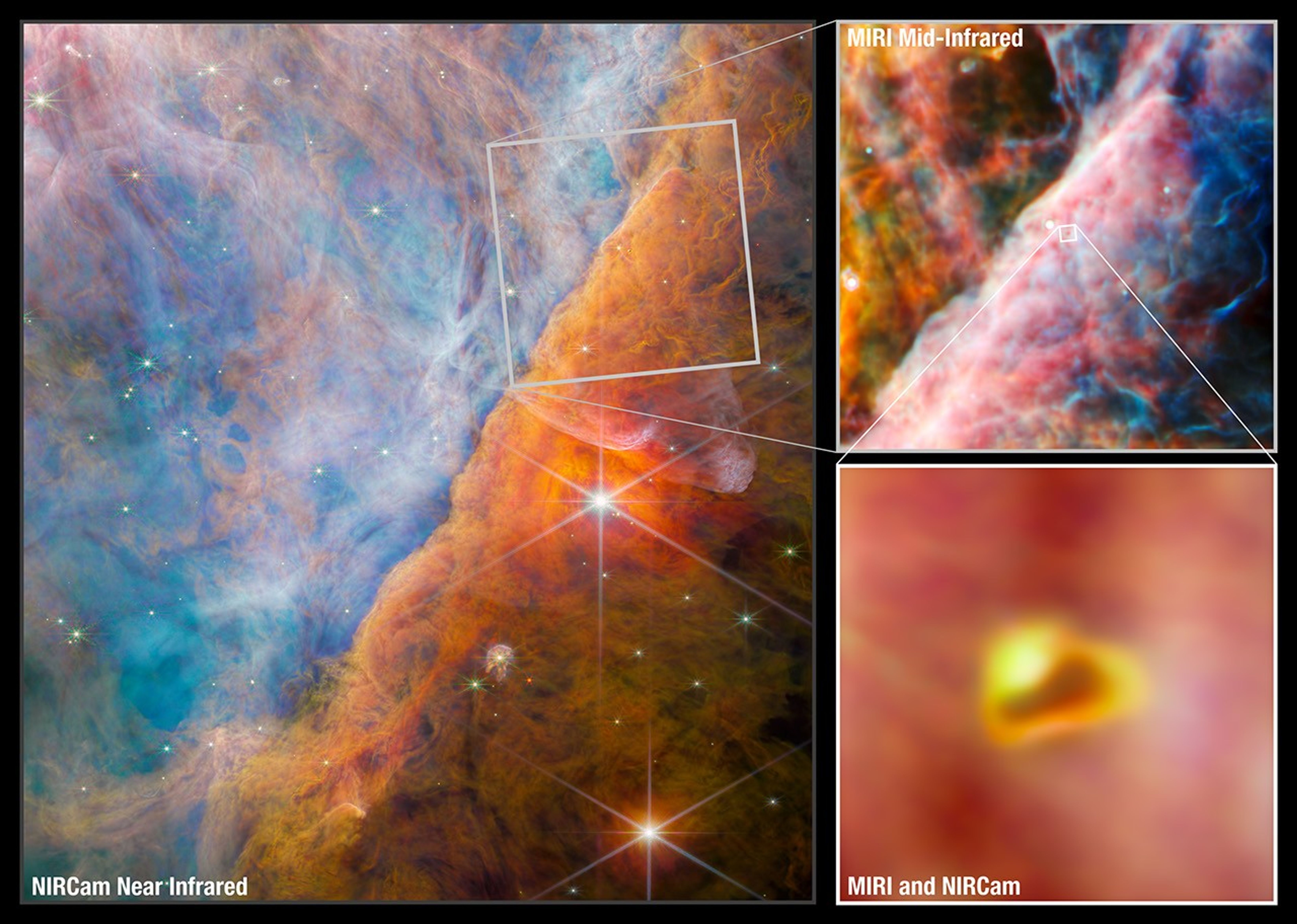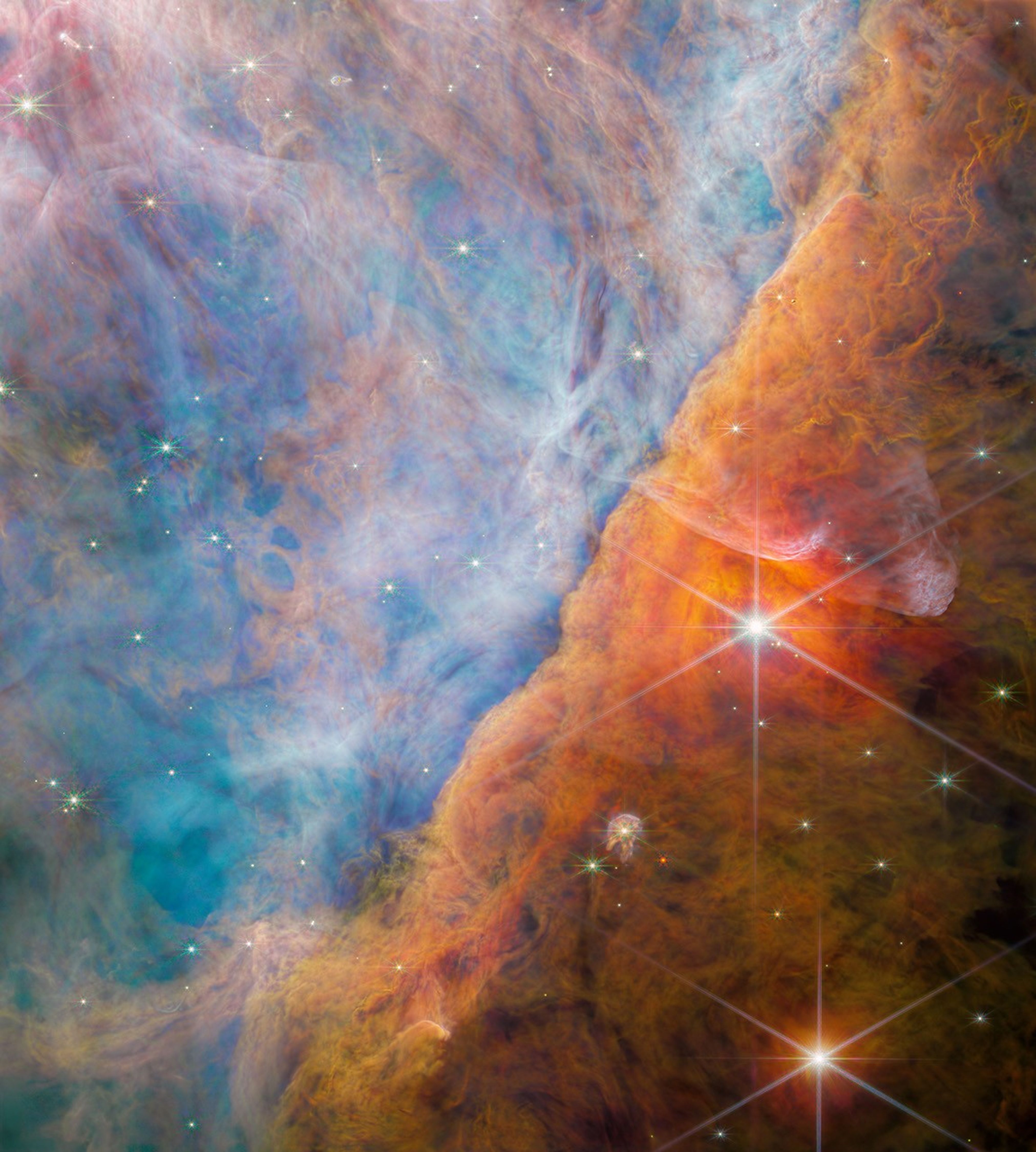1 min read
Orion Bar (MIRI Image)

This image from Webb’s MIRI (Mid-Infrared Instrument) shows a small region of the Orion Nebula. At the center of this view is a young star system with a protoplanetary disk named d203-506. An international team of astronomers detected a new carbon molecule known as methyl cation for the first time in d203-506.
About the Object
- R.A. PositionR.A. PositionRight ascension – analogous to longitude – is one component of an object's position.5 35 20.29
- Dec. PositionDec. PositionDeclination – analogous to latitude – is one component of an object's position.-5° 25' 4.50"
- ConstellationConstellationOne of 88 recognized regions of the celestial sphere in which the object appears.Orion
- DistanceDistanceThe physical distance from Earth to the astronomical object. Distances within our solar system are usually measured in Astronomical Units (AU). Distances between stars are usually measured in light-years. Interstellar distances can also be measured in parsecs.1,350 light-years
- DimensionsDimensionsThe physical size of the object or the apparent angle it subtends on the sky.0.65 x 0.64 arcminutes
About the Data
- Data DescriptionData DescriptionProposal: A description of the observations, their scientific justification, and the links to the data available in the science archive.
Science Team: The astronomers who planned the observations and analyzed the data. "PI" refers to the Principal Investigator.This image was created with Webb data from proposal: 1288 (O. Berné)
- Object NameObject NameA name or catalog number that astronomers use to identify an astronomical object.Orion Bar
- Release DateJune 26, 2023
- Science ReleaseWebb Makes First Detection of Crucial Carbon Molecule
- CreditImage: ESA/Webb, NASA, CSA, PDRs4ALL ERS Team, Mahdi Zamani (ESA/Webb)

These images are a composite of separate exposures acquired by the James Webb Space Telescope using the NIRCam/MIRI instrument. Several filters were used to sample wide wavelength ranges. The color results from assigning different hues (colors) to each monochromatic (grayscale) image associated with an individual filter. In this case, the assigned colors are: Blue: 7.7 microns; Cyan: 11 microns; Orange: 15 microns; Red: 25 microns
Related Images & Videos

Orion Bar Collage (NIRCam and MIRI Images)
These Webb images show a part of the Orion Nebula known as the Orion Bar. It is a region where energetic ultraviolet light from the Trapezium Cluster — located off the upper-left corner — interacts with dense molecular clouds. The energy of the stellar radiation is slowly...

Orion Bar (NIRCam Image)
This image taken by Webb’s NIRCam (Near-Infrared Camera) shows a part of the Orion Nebula known as the Orion Bar. It is a region where energetic ultraviolet light from the Trapezium Cluster — located off the upper-left corner — interacts with dense molecular clouds. The energy...
Share
Details
Laura Betz
NASA’s Goddard Space Flight Center
Greenbelt, Maryland
laura.e.betz@nasa.gov
ESA/Webb, NASA, CSA, PDRs4ALL ERS Team, Mahdi Zamani (ESA/Webb)






























